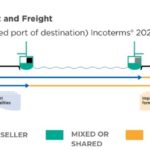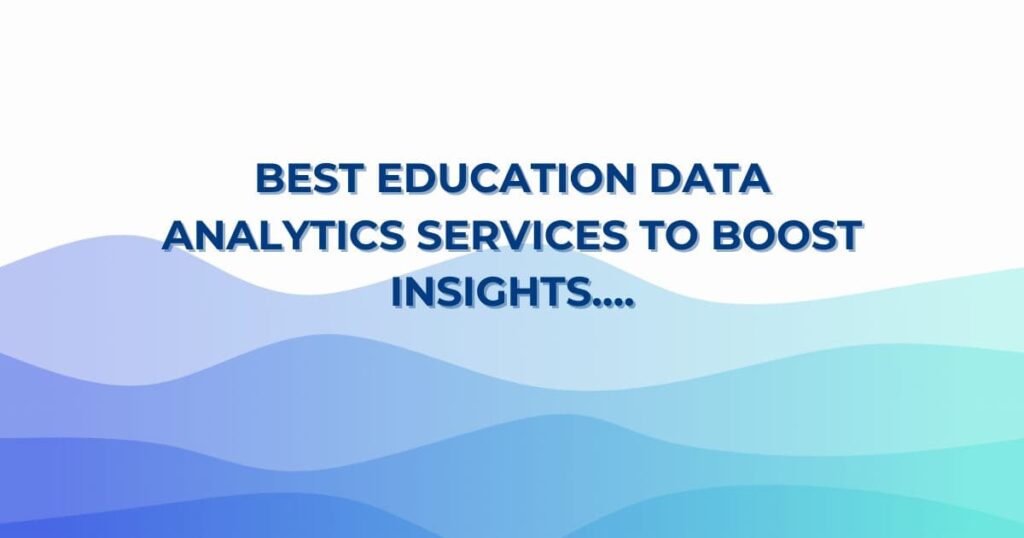Ever wondered how schools and universities are making smarter, data-driven decisions? Welcome to the world of Education Data Analytics Services — a powerful blend of technology and insights that’s transforming how education works. From student performance tracking to curriculum improvements and institutional efficiency, data analytics is becoming the secret weapon for educational success.
What Are Education Data Analytics Services?
Education data analytics services refer to a set of solutions designed to collect, process, and analyze educational data to improve learning outcomes, enhance teaching methodologies, and drive administrative efficiencies. These services use tools like AI, machine learning, and big data to convert raw data into meaningful insights.
Why Are They Important?
Let’s face it — managing modern education isn’t easy. Educators juggle student needs, academic outcomes, budgets, and staff performance. Education data analytics helps bring clarity to this chaos. It’s like turning on the headlights while driving at night — you suddenly see where you’re going.
Key Components of Education Data Analytics
1. Student Performance Analytics
Track attendance, test scores, assignment submissions, and participation to identify students needing help and recognize top performers early.
2. Predictive Analytics
Imagine being able to forecast which students are at risk of dropping out. Predictive models use historical data to make this possible.
3. Curriculum Analytics
Which parts of your course are working, and which aren’t? Data reveals gaps and strengths in your syllabus, helping educators tailor content more effectively.
4. Learning Management System (LMS) Integration
Analytics embedded into LMS platforms like Moodle or Blackboard give real-time feedback on learner engagement and progress.
5. Teacher Performance Evaluation
Using data, schools can offer targeted training, highlight strengths, and enhance classroom effectiveness.
Benefits of Education Data Analytics Services
Improved Learning Outcomes
When educators know what works (and what doesn’t), they can deliver better content and personalize learning paths.
Enhanced Student Engagement
Interactive dashboards and gamified learning insights help students stay motivated and on track.
Efficient Resource Allocation
No more guesswork — use data to invest wisely in tools, teachers, and technology.
Strategic Planning
Administrators can use data trends to forecast needs, budget efficiently, and improve policies.
Accountability and Transparency
Data-backed decisions lead to greater trust among students, parents, staff, and stakeholders.
Use Cases of Education Data Analytics
1. Early Warning Systems
Schools use analytics to flag students who show signs of falling behind academically or emotionally.
2. Adaptive Learning Platforms
Platforms like Knewton and DreamBox adjust lesson difficulty based on learner performance — thanks to real-time analytics.
3. Budget Optimization
Track spending vs outcomes across departments to make cost-effective decisions.
4. Admissions and Enrollment Insights
Predict which marketing campaigns or regions bring in the most enrollments and plan accordingly.
5. Alumni Tracking
Measure how former students perform in the real world to improve your curriculum’s relevance.
Technologies Powering Education Data Analytics
Artificial Intelligence
AI identifies patterns in student behavior, offering customized content and automated grading.
Machine Learning
ML refines itself over time — the more data you feed it, the better it gets at identifying trends.
Data Warehousing
Think of it as a giant digital filing cabinet where all educational data is stored for easy retrieval.
Dashboards & Visualization Tools
Tools like Tableau or Power BI make complex data easy to understand using graphs, charts, and interactive dashboards.
Challenges in Implementing Data Analytics in Education
1. Data Privacy Concerns
Student data is sensitive. Institutions must comply with laws like FERPA or GDPR and use secure platforms.
2. Resistance to Change
Not every educator is tech-savvy. Training and gradual rollouts are crucial to success.
3. Integration with Legacy Systems
Old-school databases and outdated software can slow down implementation.
4. Cost and Resources
Smaller institutions may struggle with the upfront costs of analytics platforms or hiring skilled analysts.
How to Choose the Right Education Data Analytics Partner
Experience & Expertise
Look for providers with a proven track record in education technology and analytics.
Customization Options
Every institution is different. Your provider should tailor solutions to your specific needs.
Data Security Measures
Ensure they follow best practices in encryption, access control, and regulatory compliance.
Scalability
Pick a solution that can grow with your institution — from K-12 to higher education.
Support and Training
You’ll need ongoing support, not just during setup. Choose a vendor that offers training for staff and admins.
Trends Shaping the Future of Education Data Analytics
1. Real-Time Data Feedback
Instant feedback helps teachers adjust lessons in the moment and support students immediately.
2. AI Tutors and Bots
Virtual assistants powered by analytics are becoming go-to helpers for students.
3. Mobile Analytics
Track performance and engagement right from your smartphone.
4. Blockchain for Academic Records
Secure, verifiable, and transparent — blockchain is redefining transcripts and certificates.
5. Emotional Analytics
Using sentiment analysis, institutions can gauge student morale and emotional well-being.
Best Practices for Implementing Data Analytics in Education
- Start small: Begin with a pilot program in one department or subject.
- Train your team: Equip teachers and admins with the skills they need.
- Establish clear goals: Know what you want to measure and why.
- Communicate results: Share insights in a way everyone understands.
- Iterate and improve: Use feedback to refine your strategy over time.
Conclusion
Education Data Analytics Services are no longer a luxury — they’re a necessity. From improving student success to boosting institutional efficiency, analytics helps educators make informed decisions that actually make a difference. It’s like giving every educator a superpower — the ability to see into the future and shape it for the better. Whether you’re running a school, teaching a class, or designing a curriculum, data analytics is the key to unlocking smarter education.
FAQs
1. What types of data are used in education analytics?
Attendance, test scores, assignment grades, engagement metrics, and behavioral data are commonly used to generate insights.
2. Are education analytics platforms expensive?
Costs vary based on features and scale. Cloud-based solutions offer affordable pricing for smaller institutions.
3. Can education data analytics help reduce dropout rates?
Yes, predictive analytics identifies at-risk students early, allowing interventions before it’s too late.
4. Is it difficult to train staff to use analytics tools?
Not necessarily. Many platforms are user-friendly, and providers usually offer training and support.
5. Is student data secure in these systems?
Reputable analytics providers follow strict data privacy and security protocols, ensuring compliance with regulations like FERPA and GDPR.
- Best Education Data Analytics Services to Boost Insights
- Explore how Education Data Analytics Services are revolutionizing the academic world. Learn about their benefits, challenges, technologies, and how institutions can leverage data for smarter, more personalized education.
- #EducationDataAnalytics, #EdTech, #StudentSuccess, #AIinEducation, #LearningAnalytics, #EducationalInsights, #BigDataInEducation, #EducationTechnology, #DataDrivenEducation, #SmartEducationSolutions
Related posts:
 The Power Shift: How AI Democratization is Redefining Access and Opportunity
The Power Shift: How AI Democratization is Redefining Access and Opportunity
 Maximize Uptime & Security with Houston’s Managed IT Services
Maximize Uptime & Security with Houston’s Managed IT Services
 CIF Meaning in Shipping Explained: Cost, Insurance, and Freight
CIF Meaning in Shipping Explained: Cost, Insurance, and Freight
 Why Paystub Generator Free Tools Are Gaining Popularity in 2025
Why Paystub Generator Free Tools Are Gaining Popularity in 2025
 Mastering ChatGPT Online: Tips, Tricks, and Best Practices for 2025
Mastering ChatGPT Online: Tips, Tricks, and Best Practices for 2025
 QuickBooks Payroll Error 17337: Solutions You Need Now QuickBooks
QuickBooks Payroll Error 17337: Solutions You Need Now QuickBooks
 From Livestreams to Global Clips: How QQAI.ai Is Turning AI Video Editing into a Worldwide Opportunity
From Livestreams to Global Clips: How QQAI.ai Is Turning AI Video Editing into a Worldwide Opportunity
 Explore Latest Tech Trends in Shower Screen Sydney Glass Designs
Explore Latest Tech Trends in Shower Screen Sydney Glass Designs








